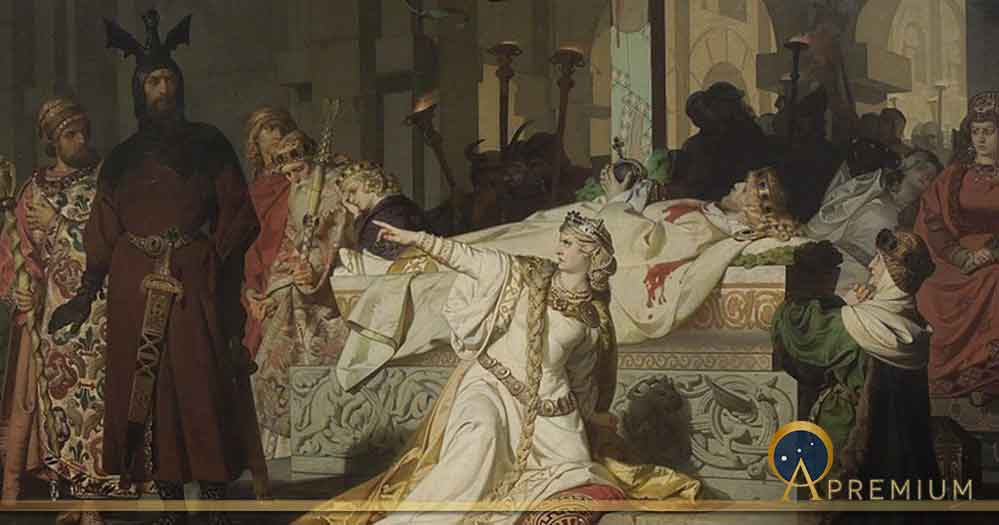Nibelungs – Germanic Race Of Elves Or Giants?
The Nibelungs are one of the most mysterious peoples of the ancient world. Some scholars regard them as a race of dwarfs or elves. On the other hand, their close identification with giants suggests that they may have been viewed as die scions of a mythical race of giants. The story of the Nibelungs appears in the Nibelungenlied a Germanic heroic legend, as followers of the great Nordic hero Sigfrid.

First page from Nibelungenlied Manuscript C (c. 1230) (Public Domain)
The Nibelungenlied
The Nibelungenlied was based on Germanic heroic legends and written in Middle High German in about 1200 AD. The story for the most part agrees with the epic of Sigurd, told in the Icelandic Eddas, especially the Poetic Edda, as well as the Völsunga saga which were based on Old Norse traditions. The story commences with the mighty prince, Sigfrid, arriving at the Burgundian court of Gunther (Gunnar) at Worms on the Rhine to woo Gunther’s sister, Kriemhild, famous for her exceptional beauty. Sigfrid’s parents, Sigemund and Sigelinde, were from Santen (Xanten) in the Netherlands, where they later ruled as King and Queen. Gunther ruled with his brothers, Gernot and young Giselher, all of them sons of Dankrât and Uote (Uta). Among those who held at the court were Hagen of Tronege and Dankwart, sons of Aldrian, and their sister’s son, Ortwin of Metz. When Sigfrid’s company of knights with their shining armour arrived, Gunther called for Hagen, who knew all the kingdoms and foreign lands well, to inform him about Sigfrid.
Although Hagen had never seen Sigfrid before, his reputation preceded him. Above all, Hagen told the marvellous story of Sigfrid’s possession of the Nibelung treasure and the brave Nibelungs who guarded it. Sigfrid stumbled upon the Nibelungs while dividing their treasure between their princes, Schilbung and Nibelung, right after they carried it out of a hollow mountain. A fight ensued and the hero killed the princes as well as 12 giants supporting them, gaining the Nibelung sword, Balmung, in the process. He also overpowered 700 knights from the land of the Nibelungs who became his followers. Additionally, Sigfrid subdued their servant dwarf, Alberich, obtaining a magic cloak of invisibility from him. Sigfrid thus became lord of the treasure. He then ordered the Nibelungs to carry the treasure back into the mountain and appointed Alberich, who swore fealty to him, in charge of guarding it.
Like this Preview and want to read on? You can! JOIN US THERE ( with easy, instant access ) and see what you’re missing!! All Premium articles are available in full, with immediate access.
For the price of a cup of coffee, you get this and all the other great benefits at Ancient Origins Premium. And - each time you support AO Premium, you support independent thought and writing.
Willem McLoud holds a PhD in Nuclear Physics (Nuclear Fusion) as well as three Masters’ degrees and is an independent scholar with a keen interest in ancient Middle Eastern and Mediterranean studies, Kantian philosophy and philosophy of science. Willem is the author of The Nephilim, Kings of an Epic Age (2021), The Nephilim, An Unholy Brood (2022), and The Nephilim, Grail Bloodlines (2023)
Top Image: Kriemhild accuses Hagen of murdering Sigfrid after Sigfrid's wounds begin to bleed in Hagen's presence, by Emil Lauffer (1879) (Public Domain)
By: Willem McLoud
















